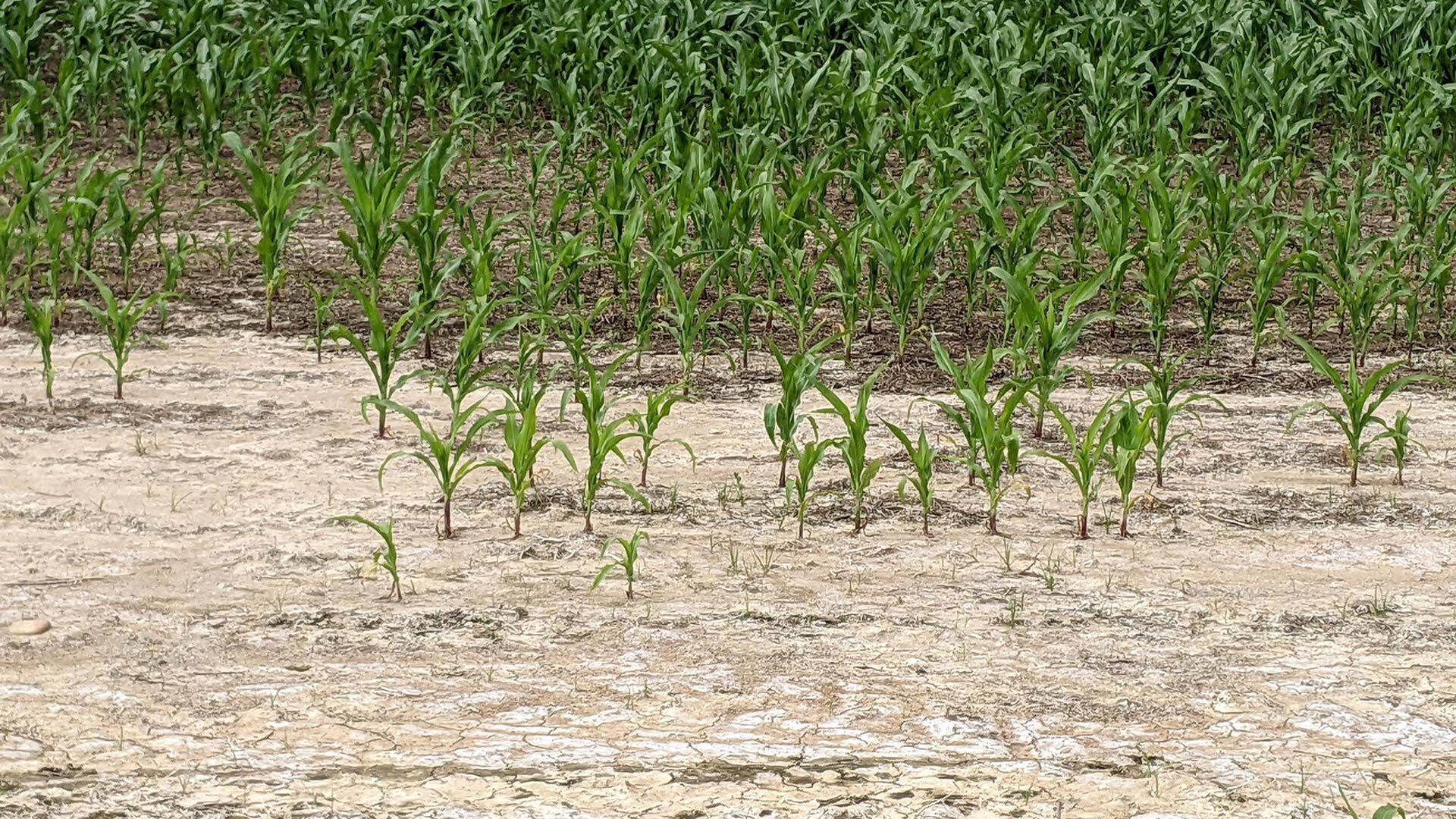- August 02, 2023
- By Maryland Today Staff
Researchers mapping the spread of saltwater intrusion on farmland in Delaware, Maryland and Virginia found that land area covered by visible salt patches almost doubled from 2011 to 2017, turning over 19,000 acres into marshland.
Scientists from the University of Maryland, University of Delaware and George Washington University also found that potential economic losses to farmers from the salt patches totaled over $427,000. The researchers also estimated potential economic losses of between $39 million-$70 million annually due to the reduced yield in farmland within 200 meters of salt patches. Their paper was published July 20 in the journal Nature Sustainability.
Across the globe, sea level is rising, and in the Mid-Atlantic region, land is also sinking due to large geological shifts and global climate change. The result is that saltwater intrudes into surface and groundwater in low-lying areas, making the soils too salty for farming.
“Saltwater intrusion often happens in advance of sea level rise, which is why we call it the invisible flood,” said Kate Tully, an associate professor in the Department of Plant Science and Landscape Architecture at UMD and a co-author of the study. “This research is the first visualization of this often invisible symptom of climate change.”
The findings in the study present the first fine-scale mapping of salt patches across the Delmarva region, a low-lying region that is facing increasing effects of saltwater intrusion and sea level rise.
“This spatial information can help identify high-risk areas and better target resources and support to regions where transitions are occurring,” said Rebecca Epanchin-Niell, an associate professor in the Department of Agriculture and Resource Economics at UMD and co-author of the study.
Using aerial and satellite images, the researchers leading the remote sensing analyses trained and tested a machine-learning algorithm to identify photos by land-type, such as a forest, marsh or salt patch, and tested the accuracy of the algorithm outputs. The research team then analyzed the results to see how those landscapes have changed over the years.
Their results show that the effect of salt patches on agricultural production extends far beyond what is currently mappable. While in some cases, the acreage of land with visible salt patches may be small, its presence denotes that the entire field is at risk of conversion to saline soil that is unsuitable for traditional farming. Additionally, soil salinity in nearby areas of the field may be high enough to reduce crop yield but not enough to leave bare patches.
“From the datasets we developed, what we’re noticing is quite alarming because we see that the salt patches are accruing quite fast,” said Pinki Mondal, lead author of the study from the University of Delaware. “The area of farmland with salt patches has almost doubled in the six years we studied.”
This is an especially acute problem for corn farmers, because corn is not very salt-tolerant, yet it makes up a substantial portion of the crops grown in the Delmarva region. In the short term, farmers could switch to growing more salt-tolerant grain crops such as sorghum to keep profit loss at a minimum. But in the long run, increasing salinity will eventually render the fields unfarmable even for salt-tolerant crops.
One possible long-term solution is to proactively convert some farmland into marsh, which would provide wildlife habitat and act as a natural barrier to slow the saltwater encroachment.
Such actions would require public policy changes and support for farmers, and the researchers hope their datasets can help stakeholders identify priority areas for various interventions.
This story was adapted from an article by Adam Thomas of the University of Delaware.
